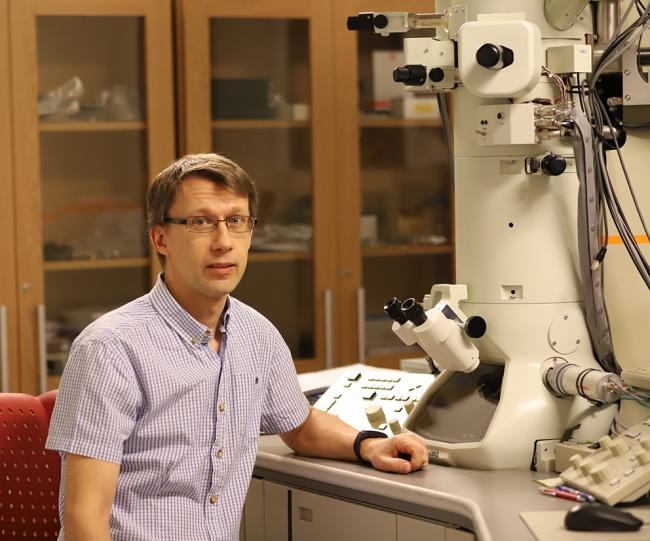Mar 5 2019
Carbon-based nanomaterials such as carbon nanotubes and graphene were projected to have an excellent future when they were first found. But quality issues limit the progress of new products. The problem is that it is tough to examine the crystal structure and there are no proven standard approaches for categorizing the materials. However now, scientists at Karlstad University are close to an answer.
 Krister Svensson, associate professor of physics, at Karlstad University. (Image credit: Karlstad University)
Krister Svensson, associate professor of physics, at Karlstad University. (Image credit: Karlstad University)
“Carbon atoms must sit perfectly in a well-organized crystal structure at precise distances, but they don’t in the commercially available materials on the market today,” says Krister Svensson, associate professor of physics.
Quality problems in nanomaterials curb development
Special properties such as high electrical and thermal conductivity as well as high mechanical strength, made scientists predict that carbon-based nanomaterials such as graphene and carbon nanotubes will have a bright future. The initial research studies of carbon nanotubes were made almost three decades ago, without yet meeting the high prospects for applications. The reason for this is mainly the failure to expand the manufacturing process while maintaining a high quality.
As the properties of the material rely on the crystal structure, the material’s quality is undeniably vital to the performance of the end product.
The problem is complicated by the fact that it is difficult to analyse crystal structure and that there are no established standard methods for classifying the materials. This has led to a kind ‘Wild West’ situation on the market in terms of prices and quality of the materials on sale.
Krister Svensson, Associate Professor of Physics, Karlstad University.
There is, at present, a danger that substandard materials on the market are tarnishing the prospects of the real ones, and interest in the material may diminish rapidly. Then a hype is all that’s left and the point of actual application is never attained.
We have now developed a method to characterise material crystallinity and we can also demonstrate the detrimental effects that low crystallinity has on mechanical properties. It is quite obvious that the commercially available material fails to live up to expectations, it’s simply a different material. Vigorous efforts to put a stop to ‘fake’ materials and develop standardised measuring methods and classifications of materials are required. Not until then can the market be ready to develop new products for the various material classes.
Krister Svensson, Associate Professor of Physics, Karlstad University.
The project was performed by Krister Svensson, associate professor, and Mattias Flygare, doctoral student, in the research group CMM, Characterizing and Modeling of Materials at Karlstad University and reported in the March 2019 issue of the journal Materials Today Communications.